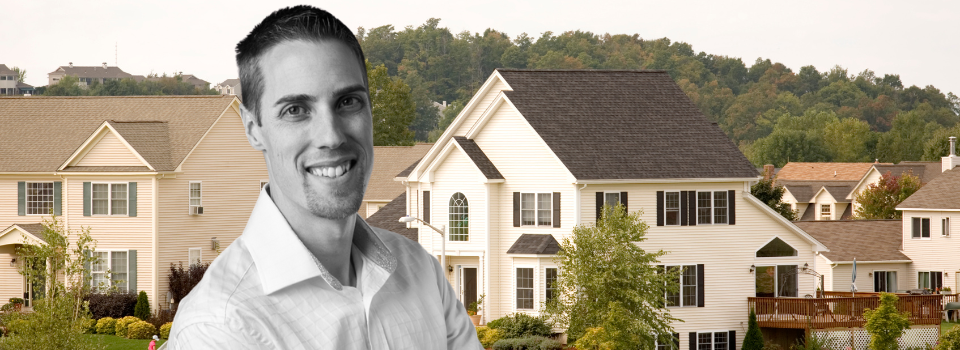I’ve said it before and I’ll say it again: knowing how to evaluate a deal is the key to success in this business! Yet very few in the industry (investors, realtors, appraisers, etc.) ever truly master this valuable skill. Believe it or not, after reading this post, you will probably understand this skill even better than most appraisers!

You could “find” all the houses in the world but it wouldn’t do you any good unless you know how to properly evaluate them and make offers that will help you ensure an House Flipping profit. In fact, if you don’t know how to properly evaluate and make offers on properties, you could get yourself into a LOT of trouble!
Unfortunately if you watch any of the house flipping shows on television they do not teach you how to do this! In fact they leave out many of the expenses which can cost you BIG time if you are not taking them into account upon your initial property analysis.
Understanding this principle separates you from being a “speculator” — someone who is just buying a house in the hopes that it will go up in value — to a true “investor” — someone who understands expenses involved in real estate and doesn’t just make wild guesses about the future. The true investor takes very calculated and accurate “risks” and understand exactly how to create a pretty significant return on their investment.
Okay! So let’s get down to it.
I’ve broken this post into the 4 most important steps you need to understand in order to help you make offers that almost always ensure a profitable transaction!
Step 1: Determine the ARV (After Repaired Value)
ARV is an acronym commonly used amongst real estate investors. It stands for “After Repaired Value” and is basically what the property will be worth after repairs and upgrades have been completed. Determining the amount of money the property will be worth once you finish rehabbing it, is always your #1 step in the deal evaluation process.
Once you know the amount people will pay for your property, then you can determine all your other expenses, figuring out the optimal place to start to make a decent profit. If you don’t know your ARV then you have no place to work back from.
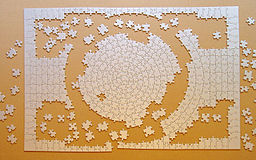
You can think of the ARV as the finished picture for a jigsaw puzzle. When you know what the puzzle is supposed to look like you can put the pieces in the correct places which creates a picture of profit. Otherwise you might spend time and energy just to end up with something you don’t want to see!
In order to accurately determine the ARV you will need to look at Comparables or “Comps“. Comps are recently sold (or are up for sale) houses similar to your subject property, in the same general area. These are used to determine the “going rate” for houses in that area and are a really good indication of what your house will sell for.
To access data for comparable properties you can use a paid or free service such as Zillow or Redfin, but to really get the most detailed information you will probably want access to the Multiple Listing Service, or MLS — a service which provides almost every detail on a property that is up for sale or has recently sold.
In order to access the MLS you will either need to work with an agent, become an agent yourself, or work with someone who can get you access to the MLS.
The first step with the MLS is to look for rehabbed “standard” sold comps which are similar to what your home will be like when it is complete. These comps are very easy to spot. They will have upgrades, nice pictures and will shine above other homes. These comps should be given the most consideration when determining your ARV.
Next, depending on how many “standard” sold comps you find, you may also want to take into consideration other recently sold comps, such as short sales or bank-owned properties (REOs) which have been renovated or are in good condition.
As a general rule look for homes that have the following criteria:
- They sold in the last 90 – 120 days.
- They are within ½ mile to ¾ mile from your subject property
- They are close in size, square footage, bed/bath count and age.
- They are in a similar neighborhood.
After looking at recently sold comps, then you can expand your search to comps which are listed (up for sale) or pending (under contract with a buyer but has yet to close).
Listed properties will let you know what you will be competing against, so if you see rehabbed houses that are not selling you wouldn’t want to value your home for more than those listed.
Pending properties might give you an idea of future values, but keep in mind that these might not actually sell for the stated price.
I would give little to no consideration to listed or pending short sales (a house being sold for less than the owner owes to their lender). This is just a number an agent threw out in an attempt to get an offer on a property. Often times the bank hasn’t even done their analysis on the property and there is a good chance the short sale lender will never approve the sale of the property at the listed price.
Although you want to focus primarily on properties that have been fixed up, also pay attention to those in a similar condition to your subject property. If there are several comparable properties which have recently sold or are listed for less than your calculated offer, this might indicate you are overpaying and you might want to reduce your offer accordingly.
It is also a good idea to check the tax records to see what other investors paid for the homes they purchased in that area.

Avoid using comps from a different city, school district or across a major barrier such as a freeway, river or railroad tracks. Also take into consideration swimming pools, garage size, lot size, views and other upgrades so you can adjust your value accordingly.
Finally you can consider current market trends and seasonal price changes for indications on both the resale value of your property, as well as the best time of years to buy or sell.
Now, these are a lot of things to keep in mind when determining your ARV! And although there is no exact formula for value determination, here are some scenarios that may help.
Scenario #1
You find three standard rehabbed homes that have sold within the last 2 months and are the exact same floor plan as your subject property. They sold for $160,000, $155,000 and $150,000.
The one that sold for $150,000 didn’t have granite counter tops, but the other 2 did and so will yours when you finish the rehab. You also see one rehabbed property that was only listed for 5 days and is now pending at $160,000 and you see one rehabbed property that has only been on the market for 2 days and is listed at $160,000.
You can feel pretty confident that the ARV of that property is at least $155,000, and would be safe to put the ARV at $157,500 when computing your offer.
Scenario #2
You find one standard rehabbed sale which sold for $120,000 just last month. You also see 2 REO’s that recently sold. One has new carpet and paint and sold for $100,000 and the other although not quite as nice as the standard sale looks a little nicer than the other REO and sold for $110,000.
You also notice a standard sale that is pending at $125,000 and one listed at $130,000. You wouldn’t want to go with the $130,000 or $125,000 value since there isn’t anyway of knowing if those properties will actually sell for that price, but this additional data supports the value you see in the standard sale at $120,000 and you can confidently use that as your ARV when determining your offer.
Sometimes the value is easily determined, and other times it can be a bit of a challenge. When in doubt always err on the side of caution when making your offer!
Step 2: Estimate Repair Costs
The next step in being able to accurately determine an offer price is to estimate the cost of repairs. In my company, we have become so good at this we can often look at pictures or just get a description from someone and if we know the age and size of the house we can guess the repair costs within about 1-2% without ever seeing the house!
I don’t tell you this to brag, but just to help you understand that with time and some experience estimating repairs is not as difficult as you think.
The “$20 per sq. ft.” rule is a guideline we use to give us a pretty good idea of what it is going to cost us to fix up a house. In a nutshell, this rule comes from our experience that most houses requiring a full “standard” cosmetic rehab will cost around $20 per square foot.

A “standard” cosmetic rehab usually includes all new flooring (carpet and hard surface floors), paint (inside and outside), baseboards, electrical and plumbing fixtures, new kitchen/bathrooms (including cabinets, granite, appliances), blinds and window treatments,, doors and maybe a little bit of landscaping.
For example, if you are buying a house that is around 1,500 sq. ft., you can plan on spending right around $30,000 for the rehab (1,500 x $20 = $30,000).
Now, this rule assumes you are rehabbing an entry or mid-entry type of house. If you are rehabbing a higher-end house and using higher quality materials and finishes, then you are going to adjust the rate closer to $25 or $30 per square foot. But for your standard basic rehab, the $20 per sq. ft. rule works like a charm.
From this point you can adjust up or down based on additional needs (or things you don’t need). For example if you need to redo the roof, you will want to add $5,000 – $8,000. A new HVAC? Probably around $5,000. New pool equipment or resurfacing will put you out another $5,000. And new windows run around $200 per window.
You will also need to add additional costs if you have to rewire the electrical, redo the plumbing or if you are doing anything structural to the house.
Now, on the “flip” side of that you can adjust your price estimation downward if you do not need to do some of the standard items.
For example, if the house already has a newly refurbished kitchen, then you can remove that from your rehab costs. In fact, if all you have to do is repaint the interior and change out the carpet or other small items, you might be able to do the whole house for as little as $2,000 – $5,000. It just depends on what the house needs in order to bring it up to retail (or after repair) value.
Overtime you will develop a better understanding of these expenses and will be able to easily calculate the rehab costs, up or down. We will continue to revisit this topic in more detail in future posts as we discuss rehabbing and working with contractors.
Something to keep in mind is that you will probably only use this $20 per sq. ft. formula when you are coming up with your initial offer price. Once you get an “acceptance” on an offer, you will probably want to go through the property with a licensed contractor and come up with a more detailed “scope of work” and repair estimate to ensure you didn’t miss anything major with your first estimate.
You can either do that yourself or if you are looking to “wholesale” the property to another investor, you can just contact them and, if they are an experienced rehabber, they may just pay you a fee and buy the house without you ever having to even take this route.
Step 3: Calculate for Closing and Holding Expenses
This is one area they seem to “forget” to mention on all of those house flipping shows. Not sure if they think it is more “sexy” to show a bigger profit, but flipping houses wouldn’t be nearly as exciting if you find out that all the money you thought you were making is getting sucked up in closing and holding costs.
Following are a few of the holding and closing expenses you need to be aware of when calculating your offer on an investment property.
Purchase Closing Costs
These are the closing costs you incur when you are buying the house. Traditionally most of the commissions and closing costs are paid for by the seller, so when buying a property your expenses will typically be less than when you sell the property. Since this post is on deal analysis and my goal is not to teach you about every single expense involved in buying a house, for now we will just say to calculate for 0.5% of the purchase price when buying a house for buying closing costs.
Selling Closing Costs
This is where it can get a little more expensive. If you are selling a house with an agent you can usually count on a commission of 5 – 6% for agents. Depending on the area and market your buyer may ask for concessions to help pay for their expenses as well. This can range from 1 – 6% but is typically about 3%.
Then you will want to include about 1% for additional closing costs such as title and escrow or attorney fees.
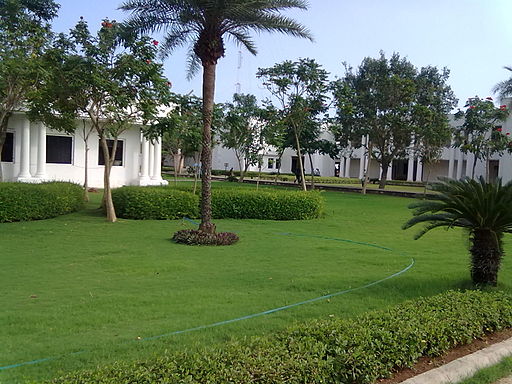
So, selling closing costs can really add up if you are using an agent to sell your house. and your buyer is asking for concessions. Depending on the area and type of home we are dealing with, we will typically account for anywhere from 6%-10% of the sales price for closing costs.
Holding costs
Even more so than closing costs holding costs are typically something many people forget to take into consideration when buying an investment property. Holding costs can include, property taxes, insurance, utilities, maintenance such as lawn, HOA and or Mello-Roos, if any.
You will want to make sure you know what these expenses will be and depending on how long you intend to hold the property you will need to calculate for those expenses during this time.
Financing Costs
If you are using your capital then you will not need to worry about financing costs, but if you are not “Daddy Warbucks” and have to use financing like the rest of us, then be sure to account for this. It can really add up!
If you have a private money lender you can expect to pay anywhere between an 8 – 12% annualized return on your capital. If you are using a hard money lender in today’s market, you can expect to pay right around 12% annualized with additional points and fees. (Points are just a fancy way of saying percentage points.)
Most hard money lenders will charge you 2 – 3 points (basically 2 – 3%) however this is not annualized so regardless of how long you borrow the money this is what you will be paying on the money you borrow. The fees vary but you may want to calculate for an extra “point”, or an extra 1%, for these expenses.
So for financing if you are paying a private lender 12% annualized, that would be the same as 1% for each month you borrow the money. If you plan on holding the property for 4 months you will need to calculate for 4% of however much capital you will be borrowing. If you are using hard money you will need to calculate for an additional 2 – 3% on top, so that would be around 3 – 7% for financing costs for a 4 month period.
For example, if you borrow $100,000 from a private lender, then for each month you are borrowing the money you would pay 1% or $1,000. If you hold the property for 4 months, then you would pay $4,000.
Or, as another example, if you borrow the same $100,000 for a hard money lender, then you would calculate around 2 – 3% right out the door, which is $2,000 – $3,000. Then, for each month you are borrowing the money you pay an additional 1% or $1,000. So, for the 4 months from the previous example, you would pay $6,000 – $7,000 for financing costs.
Still with me? I know it is a lot to take in at first. Trust me I have been there!
We will continue to go over this stuff and the more you hear it, and start to put it into practice, the more you will understand. In time it will all become second nature! We will go over financing costs in more detail later on, but just make sure you are calculating for this because it can REALLY add up!
Step 4: Determine Your Offer (and 2 Formulas You Can Use To Help You Do This!)
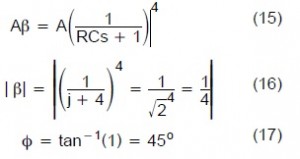
Once you have a better idea of how to determine your potential selling price (your ARV), and you can estimate your expenses, then it becomes time to come up with an offer price!
There are several formulas you can use to help you calculate what to offer on a property. I was going to cover 4 here but after reading through I realized it might be a little overwhelming if you are just getting started, so I am going to cover the 2 easiest and most basic ones here and we will get into the others later.
Formula #1
(ARV) – (Repair Costs) – (Closing and Holding Costs) – (Desired profit) = Offer Price
Simple enough, right? This is the most basic and most obvious formula, and probably the most accurate way to determine your offer price.
Basically it boils down to figuring out what can you sell the house for minus all of your expenses and desired profit. Then that gives you your offer price.
Your desired profit will of course just depend on you and how much you want to make. You want to be conservative and leave some room for error, but you will quickly realize that if you are too low on your offers your chances of buying many houses will be pretty low.
For the most part I would recommend your profit be based on a % vs just a standard number. You will understand why I say this much more in the weeks and months ahead but it has a lot to do with managing risk, returns on capital, and bigger picture thinking as you put together the pieces for your house flipping machine
Okay, once again I am getting ahead of myself! As a quick rule when first starting out you can just calculate 10% of your ARV for the profit. So if the ARV is $250,000 you can calculate a profit of $25,000.
Here is an example: You have a 2,000 sq. ft. home with an ARV of $220,000 which requires a standard rehab as well as a new HVAC and you are financing it all through private money lenders. Based on those numbers you would end up with the following:
- ARV = $220,000
- Repair Costs = ($20 / sq. ft x 2,000 sq. ft =) $40,000 + (new HVAC =) $5,000 = $45,000
- Closing and Holding Costs = 1% (purchasing closing) + 8% (selling closing) + $X (holding) + 1% / month (private money financing) = approximately $18,000
- Desired Profit = $22,000 (10% of ARV)
or $220,000 – $85,000 ($45,000 + $18,000 + $22,000) = $135,000 Offer Price.
Now that we’ve done it that way, let me show you a faster and easier way to calculate an offer for an investment property. You may sometimes hear this formula referred to as the “70% rule”. Here it is…
Formula #2
ARV x 70% – Repair Costs = Offer Price
Basically you are taking what the property should sell for when fixed up, subtracting what it will cost you to fix up, and then you are leaving 30% to cover closing and holding costs, as well as desired profit.
Make sense?
Let me give you an example …
If the fixed up or retail value of a house (ARV) is $200,000 and the repairs to bring the house up to that retail condition will cost $25,000 then this is how you would calculate your offer:
$200,000 (ARV) x 70% – $25,000 (Repairs) = $115,000
Pretty simple, right?
Now I want to be very clear here. This is not a one size fits all formula, and needs to be adjusted based on the scope of the project you are working on, how long it will take, the type of financing you get, your acquisition strategy and the market conditions at the time of your offer.
I have seen this same formula being used with 60% up to as high as 80% (or even up to 90%!) so keep that in mind. But if you are just starting out, you can be pretty “safe” using the 70% rule and adjusting from there.
When I originally started this post I wasn’t going to do this, but I decided it might be helpful to share a video that my friend Doug and I put together about 3 years ago. We created this to teach agents we were working with how to analyze deals.
First of all, the video quality is HORRIBLE! Keep in mind this was a long time ago when I was still new to the rehabbing process (up until then I had mostly done wholesale deals). But that caveat aside, I still think this video could provide a lot of value to a new investor.
I will definitely do a higher quality video in the future, but for now I think it serves our needs.
Note: In this video we used 75% to determine our offer price.
In Conclusion …
So now you have a pretty good idea how to determine a property’s ARV, you have an idea of how to estimate repairs, and you know what to expect for closing and holding costs. You even have some great formulas in your toolbox to help you calculate your offers!
I know it might seem a little overwhelming at first, but no one ever said flipping houses was a walk in the park. (And if someone told you that, they clearly hang out in the wrong kind of parks!)
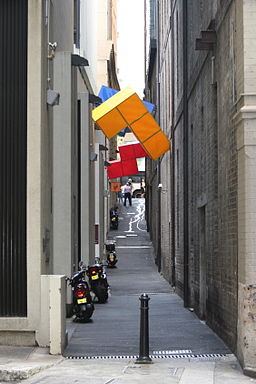
It reminds me of an analogy my web designer/consultant used a few weeks ago when I expressed feeling overwhelmed by all this online technology. There are so many moving parts and just too much to learn! (Basically I was having a bit of a break down and wanted to “throw in the towel”
He said when someone first starts learning how to use and implement online and media technology it feels like a game of Tetris, but played in reverse. In the beginning all the pieces are falling super fast, such that it feels overwhelming and almost impossible to figure out where to put them as they come falling down! But as time goes on the game starts to slow down, and you begin to understand more clearly what each piece is for, and where it fits in the “puzzle”
Real Estate investing or any other worthwhile venture is the exactly the same!
At first it seems impossible to learn all you need to know, but over time your capacity starts to grow. Although you are taking on more than when you started, it actually feels like you are doing less.
It happened to me with real estate and it is beginning to happen to me again with becoming a “tech geek”.
And, without a doubt, it WILL happen with you and house flipping if you stick with it and continue to push forward.
Your Homework
Okay! So, here is your assignment. Later this week I am going to post a detailed article to teach you more about where you can find these properties and how to make offers. In the meantime, I want you to do some “paper trading“. Go online (or drive by some houses in your neighborhood) and try to get a feel for what you would offer on these houses. Try to do this for at least 5 properties.
If you don’t have access to comps, then do your best coming up with an ARV on your own. But even if you don’t know the exact ARV just come up with a “pretend” ARV so you can practice using the formulas and rules I outlined in this post. Then, once you either find an agent or get access to comps, you can improve the specificity of your ARVs.
For now just make your best guess and try to plug in as many answers as you can.
My goal is that by next week, you will start to take REAL action and get some offers out.
Now, I’m not saying you are going to completely start dominating your market place and make $100k over the next 30 days! I just want you to get in the habit of doing the one thing that will create success in this business: MAKE OFFERS!
For many people it takes them years to get up to speed making offers, but once you get your feet wet in this area all of the additional coaching we do here will be amplified because you will see things differently. It might not make sense right now, but you can bet it will down the road!
If you have any questions about this process of evaluating properties, just put them in the comments below. This is a lot of information and it will take some time to learn and apply it, but with enough practice these “pieces” will seem like they are falling incredibly slow and you will know exactly where to put each one. And soon enough you will really start to create and build your own house flipping business.
If you enjoyed this article you may also like our other fan favorites:
“20 Top Real Estate Investors Reveal Their Secrets for House Flipping and Wholesaling Success!”
“Working with Private Money Lenders to Get Your House Flipping Deals Funded!”







-p-1600.jpeg)




